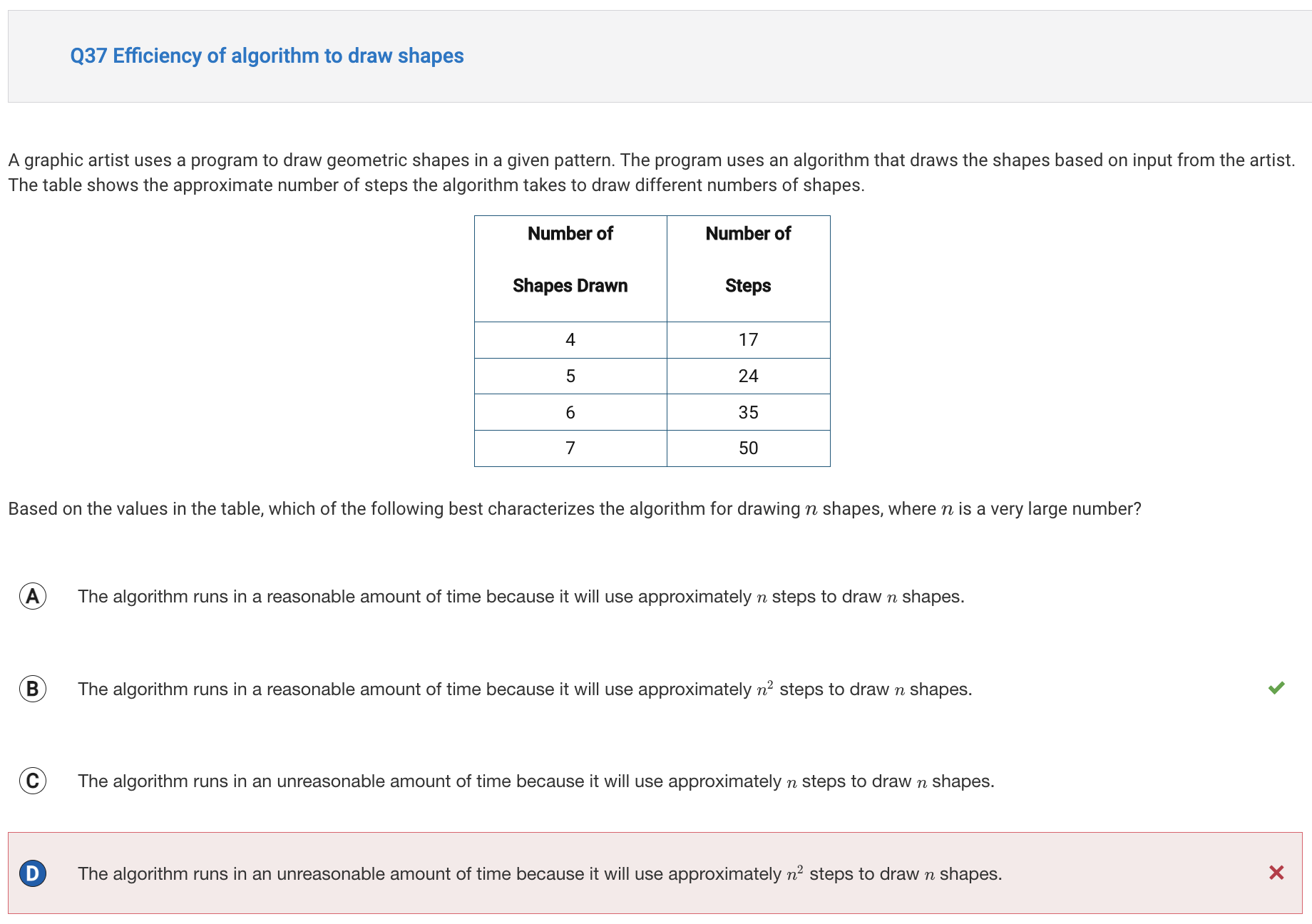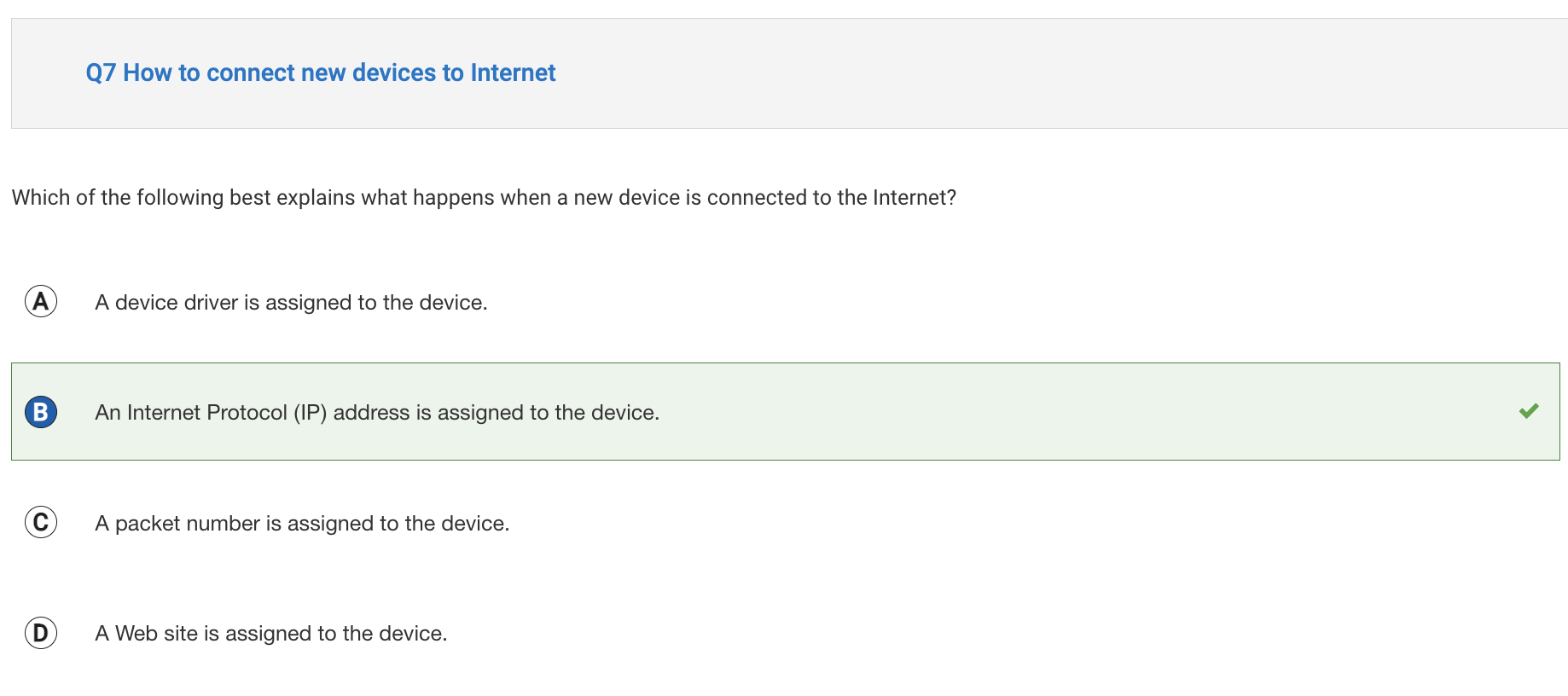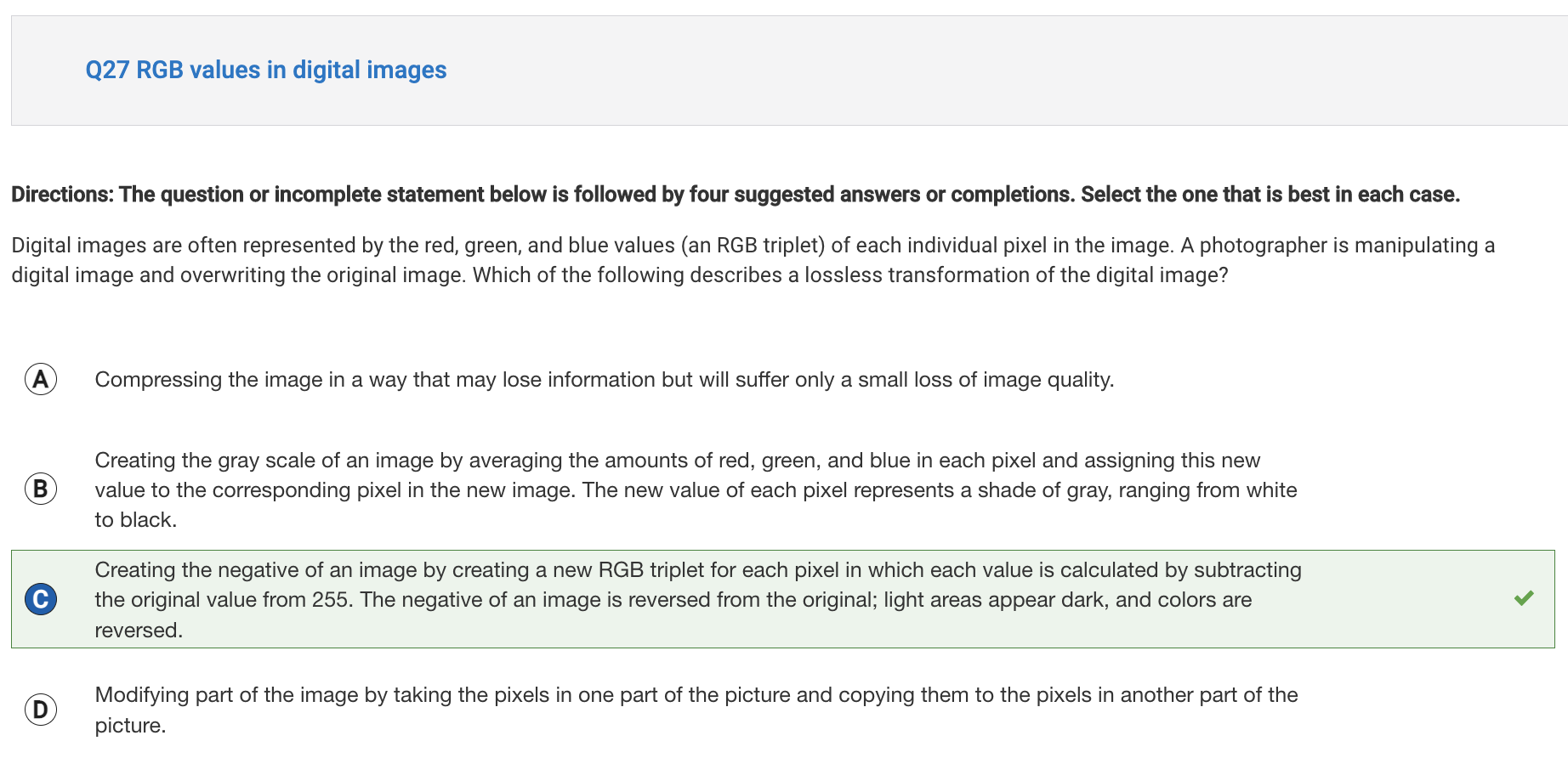Multiple Choice Quiz 4 Reflection
A reflection on the MCQ 4 test.
Results

I got 49/50. I’m kind of disappointed that I didn’t get a full 50, but at the same time, there were quite a few questions I struggled with, so I guess it makes sense.
The Problem I Got Wrong
I only got one problem wrong this time.
Question 37

The error is pretty simple. I didn’t know what “unreasonable” was in the context of the time complexity of a function.
I now know that any algorithm with polynomial efficiency or lower is reasonable, and since n2 is polynomial, it would be reasonable. Easy mistake to fix.
Problems I Struggled With
I struggled with a few of the questions, once again often ones that had to do with internet concept questions. My specific reflections are below.
Question 7

In my past experience with Big Idea 5, I don’t remember ever learning what happens when a new device is connected to the internet. However, I’ve lived with technology for my whole life and I did learn what an IP address is, so I had some vague idea of what would happen.
My uncertainty led me to turn this into a process of elimination. I know what a driver is, since I’ve had to install them for my Blue Yeti, drawing tablet, etc. It doesn’t have to do with the internet, as far as I know. Packets are the bits of information that get sent over the internet before being reconstructed, so that felt wrong. And I know for a fact that each device doesn’t get its own personal website. As a result, I basically learned that a new device gets assigned an IP address when it first connects to the internet.
Question 10

This one was another process of elimination for me, though an easier one. When I heard “Web server,” for some reason I was thinking of some kind of local server, which I know doesn’t connect to the internet. However, I still got this one right because the other possible options were just so bad. Computer manufacturers don’t make a difference, additional hardware is excessive, and I don’t see why different formats of data can’t be represented if all data is ultimately sets of ones and zeroes.
Question 27

This was one of the problems where all of the answers contained so much text that they all felt like they could contend as correct answers (at least when I first read them). Part of the reason I struggled with this one is that it talked about losslessly transforming an image, but I had assumed it was referring to losslessly compressing an image.
Ultimately, though, the importance of it being lossless made it clear that only C could be correct, since A, B and C all lost some amount of the image data.
Overall Reflection
Here are some things that the test let me know I should study further:
- Home in on specific internet concepts. Make sure to fully understand packages, internet protocols, how devices interact with the internet and each other, and other concepts from Big Idea 5.
- For problems with lots of wordy answers, make sure to fully read the question. It will make it easier to rule out long bodies of texts without reading them fully, and to identify the correct answer when it appears.
- Make sure to know the terminology behind time complexity especially. It’s good to know that any time complexity polynomial or lower is considered unreasonable when run with larger numbers.